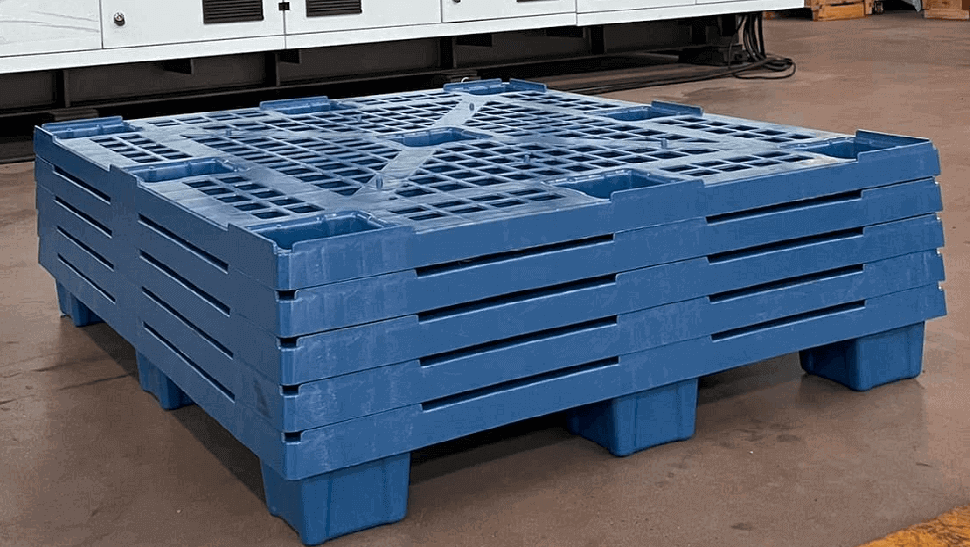What Are The Standards Size of Plastic Pallets?
Dec. 7, 2022
With the development of industrialization and the rise of mechanization, pallets play an important role in more and more fields. Pallets make for efficient material handling and storage. Pallets are widely used in the logistics industry, various industrial sectors, and the goods export industry.
Pallets are actually horizontal plates used to assemble stacked goods for easy loading, unloading, and handling. Therefore, the height and size of the pallet should be adapted to the handling requirements of trucks, forklifts, and other loading and unloading equipment.
At present, there are wooden, plastic, and iron pallets on the market, as well as pallets of various new materials. So plastic pallets characterized by anti-corrosion, moisture-proof, anti-rust, moth-proof, and non-moldy are welcomed in many fields. Plastic pallets have so many advantages. Then do you know the specifications of plastic pallets?
In fact, international pallets come in a variety of sizes, pallet sizes vary depending on location and usage!
The most common pallets currently used in most countries are these 6 specifications:
- 1067 mm × 1067 mm: North America, Europe, Asia.
- 1165 mm × 1165mm: Australia, New Zealand.
- 1100 mm × 1100 mm: Asian size (Japan, Korea, Singapore and other Southeast Asian countries).
- 1200 mm × 800 mm: European specifications (Germany, France, etc.).
- 1200 mm × 1000 mm: European(UK, Netherlands, Finland) Canada, China and most other countries.
- 1219 mm × 1016 mm: US specification.
At present, there are two conventional heights of plastic pallets, one is 140mm and the other is 150mm. For special industries, the height of plastic pallets is also 110mm,160mm, 170mm, and 185mm.
Plastic pallets with a height of 110 mm can only be used as a warehouse backing plate, they cannot cooperate with manual and hydraulic forklifts, and they cannot be used for turnover goods. The other three heights can be used normally with forklifts.
Let’s take a look at how to choose your pallet size:
- 1100mmX1100mm this size pallet is an ISO international standard container, the fit rate is very high and suitable for container size, forklift loading and unloading pallet can be a one-way fork, so the bottom shape of the pallet structure is simple, and the pallet quality and strength is better, but also convenient for container loading and unloading operations. However, the size of this kind of pallet is incompatible with the packaging module of most mainstream products, and it is difficult for the product to be stacked neatly on the pallet.
- 1200mmX800mm this size pallet is suitable for the product packaging module because the world’s mainstream product packaging module standard is 600mmX400mm, but the product export also needs to adapt to the container size of the 1200mmX1000m standard specification pallet.
- 1200mmX1000mm specification pallet not only adapts to the size of sea containers, but also adapts to the mainstream product packaging module, and is the most widely used in the world, so this standard size pallet is the world’s most common standard specification.
- 1219 mm×1016 mm pallets are mainly used in the United States, and now the 1200mm X1000mm have also been accepted by many companies in the United States.
Pallets flow with the goods between producers, wholesalers, sellers, and users. This flow of pallets results in several advantages in pallet size:
- It should be applied to the product packaging module to ensure that the pallet has the best loading efficiency;
- It should be adapted to the size of various forklifts to optimize the loading and unloading efficiency;
- It should be adapted to the shelf specifications to improve storage efficiency;
- It should be adapted to the specifications of freight cars, train caravans, and containers to improve transportation efficiency.
Powerjet large two-platen injection molding machines can meet the plastic pallet production requirements of different size standards.





